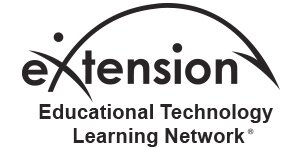This blog series on the Maker Movement was written by Steven Worker, 4-H Science, Engineering, and Technology Education (SET) Coordinator at the University of California Division of Agriculture and Natural Resources. Steven coordinates the California 4-H SET Initiative, an effort to strengthen youth science education in the 4-H Youth Development Program. In this role, Worker manages professional and volunteer development for educators, coordinates program and curriculum development and evaluation, and resource development. Worker is a PhD candidate at the UC Davis School of Education studying (qualitative case study) the co-construction of design-based learning environments by youth and adult volunteers in out-of-school time. Follow Steven on Twitter at .
Introduction to Making and Tinkering in 4-H
The Maker Movement has gained recognition as an approach to involve young people in technology-based projects. Make:® has tremendous potential to give Extension and 4-H an opportunity to “re-brand” some of what we already do well and authentically. As Paul Hill, Dave Francis, and GaeLynn Peterson state in their Journal of Extension commentary: “The Maker Movement embraces the idea of igniting the spark in young people to create, collaborate, and develop 4-H science abilities.”
Defining Maker Movement
The Maker Movement is a technology-based extension of do-it-yourself culture emphasizing a spirit of innovation and creativity. Make is typically seen as the use of digital tools to design, create, and share projects with an emphasis on exhibition and not competition. Lee Martin (2015) argues that the Maker Movement relies on three pillars: the use of digital tools (e.g., 3D printers, laser cutters); community infrastructure (including meetings, maker spaces, fairs, magazines, and websites); and dispositions including playful activities, growth mindset, and positive role of failure.
Defining Tinkering
Tinkering, frequently found in science centers but related to Making, are hands-on and open-ended activities where youth explore materials while building something. Tinkering is often associated with play, as people try out ideas, make adjustments, and experiment with possibilities. This way of designing has been promoted as a way to improve interest in engineering and as a model for work in the disciplines. Tinkering is a powerful place to learn; Mike Petrich, Karen Wilkinson, and Bronwyn Bevan (2013) argue that tinkering must be intentional: “learning through tinkering is not serendipitous: it comes about through a process of design decisions and principles that create specific types of opportunities for learning”.
Why Making and Tinkering?
Climate change, drought, food deserts, and energy issues will require innovative and creative solutions, so we need to prepare our young people to become creative problem solvers. Partnered with the 4-H program, with its emphasis on civic engagement, Making and Tinkering will be powerful approaches to engage youth in open-ended thinking and problem solving around social and environmental issues.
Guided Making & Tinkering + Real World Environmental Issues =
Development of Creative Problem Solvers
Together, Making and Tinkering (shorted to M&T), are exciting approaches to structuring a learning environment that may spark, nurture, and deepen young people’s interest in learning STEM.
Relevant References
Blikstein, P. (2013). Digital fabrication and ‘making’ in education: The democratization of invention. In J. Walter-Herrmann & C. Büching (Eds.), FabLab Of Machines, Makers and Inventors (pp. 203-222). Bielefeld: Transcript Publishers.
Honey, M. & Kanter, D.E. (2013). Design, make, play: Growing the next generation of STEM innovators. New York: Routledge.










November 14, 2015
I want to connect with other 4-H volunteers running maker programs and makerspaces. We have a 4-H makerspace in rural Missouri – Lab:Revolution the 4-H Technology Playground and Makerspace. http://www.labrevo.org Feel free to get in touch.
November 19, 2015
Thanks for reaching out Ann! Check out https://extedtechs.org/makers
I will also send you an invite to our eXtension Maker Community.
December 4, 2015
We have opened back up a fledgling Space up in Northern Michigan. We can use ALL the pom-pom’s we can get here. Maker / Hackerspace’s are a New concept up here in this rural Area. I was told that Grand Traverse Co, MSU Extension looks at this area as .” Under Served”. So glad they too see the NEED. I personally was introduced to the Makerspace Community 4 yrs. ago. I then met Paul Grayson of the Traverse City “was” 4-H Robotics & now goes by 4-H Makerspace. He taught me the Awesome Opportunities of 4-H & how both the Maker / Hackerspaces work so well hand in hand w/ 4-H. Sense then i spent the last year down in Grand Rapids Michigan working w/ in 2 of the Makerspaces & learning a lot from the Grand Rapids Makerspace Community. We went into Schools & rallied Event’s even in a Neighborhood Mobile Home Park Community Room doing Take a-parts & everything Makerspace while introducing 4-H to them in a whole new way. Tis also a New Concept to “many” that 4-H isn’t just Bunnies & Goats. LOL! So, now w/the Maker Revolution & 4-H being the passion in my life i have also drug a few of the G.R. Mi. Makers into out Hula-Hoop. New addition also in Lakeview Michigan. I will share all 3 of the 4-H Makerspace’s i have spoke of. So we can ALL help bring others into this Awesomenss ! Goooooooooo Makers! Teresa Mills / Leader of the :.. …… Handi Randi Huckins leader of the :.. …. Paul Grayson of the :….
December 7, 2015
Thank you for this helpful information Teresa! I will send you an invite to the eXtension Maker Community. Once you join, you will be added to a Google Group which will allow us to connect and share resources more smoothly.
May 28, 2017
Rock on Paul!
I just now ran upon your response.
Thank You!
And i will now get to the Google Group & pass this onto Randi downstate…
Thank You for being part of our solution.
Change Makers like you truly do MAKE the difference.